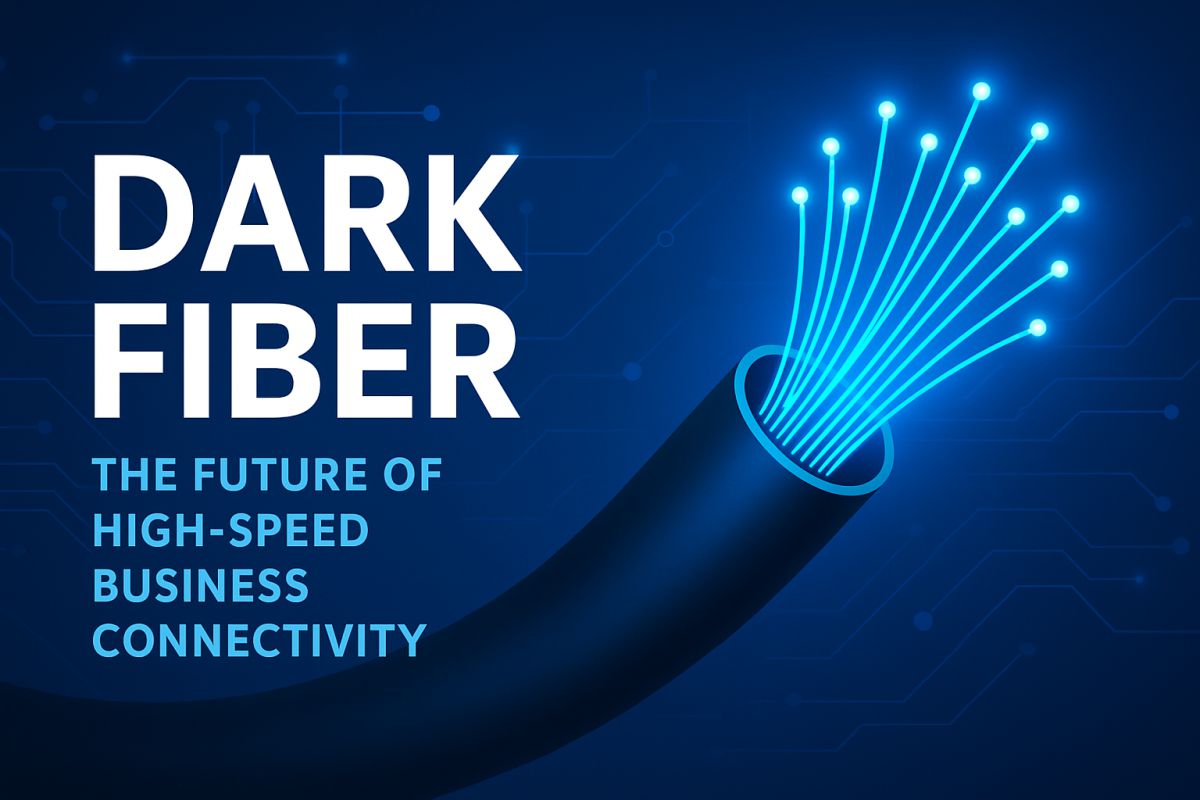As businesses increasingly demand faster and more stable internet connectivity, the need for such connectivity has never been more pressing. Enterprises and consumers are seeking fast, secure, and flexible solutions. One example of a rapidly growing trend is the use of dark fiber. Dark fiber has its own advantages over traditional networks. This post examines why utilizing dark fiber providers can be a strategic decision.
Understanding Dark Fiber
Dark fiber refers to optical fiber cables that are not in use. Cables were initially installed over 15 years ago by telecommunications companies for anticipated growth. With technological development, a lot of these wires went unused. These fibers can now be leased or purchased by businesses for their own private networks. Services from dark fiber providers offer a type of control and customization that will be hard to come by with a regular network.
Advantages of Dark Fiber
Enhanced Control and Security
When it comes to ‘no strings attached control’ of the network infrastructure, no other option reigns supreme than dark fiber. Businesses can, therefore, control the data flow and security protocols without depending on third-party providers for bandwidth. This aspect minimizes breaches and gives you peace of mind. Making it a private network ensures that sensitive information remains protected, as fewer outsiders would have access to that information.
Scalability and Flexibility
As businesses expand, their data requirements also increase. This dark fiber can be easily scaled, thus enabling companies to increase bandwidth without requiring considerable infrastructure upgrades. Such flexibility is essential for businesses with uncertain demands. Dark fiber is a more flexible alternative, as traditional webs are usually limited in the bandwidth they can provide.
Superior Performance and Speed
Traditional Ethernet infrastructure suffers from speed and performance issues, which dark fiber addresses. Without typical bandwidth, there is no resource contention. It features faster data transfer and lower latency. This aspect is a crucial benefit for businesses that rely on real-time data, such as financial institutions or streaming services.
Cost Efficiency Over Time
While the upfront cost may be more, especially with dark fiber, it typically pays for itself over time. There are no recurring charges usually associated with a conventional service provider, which allows for ownership of a private network. The cost savings grow progressively clearer as the requirements for data increase. This aspect will enable businesses to spend more strategically without worrying about increasing connectivity costs.
Challenges to Consider
Initial Investment
Investing in a dark fiber network requires a substantial upfront capital investment. Buying or leasing fiber and associated equipment requires a considerable investment of resources. The benefits and savings over the long run, however, compensate for these upfront costs.
Technical Expertise
Operating a dark fiber network requires skill. The service industry requires workforce hiring, upkeep, and repair. It may involve employing specialized staff or training existing workers. That can be a stumbling block for businesses that aren’t exceptionally technical.
Geographical Limitations
Dark fiber is not available everywhere. There is existing infrastructure in urban areas. Dark fiber may not be a realistic option in rural areas, as there are limited options available. Before proceeding with this route, businesses should check availability.
Compared to Traditional Networks
Traditional networks provide ease and relatively lower initial costs. Service providers manage maintenance, and businesses leverage the existing infrastructure. But there are limitations to these networks. During peak hours, the shared bandwidth makes for slower speeds. Lastly, security is a challenge because data passes through several points, thus making it more susceptible.
Conclusion
Dark fiber is a viable alternative to conventional networks. It can be appealing for several reasons, as each of these leads to better control, a more scalable solution, the performance needed when operations expand, and a lower cost of ownership over time. Despite the challenges, the disadvantages usually pale in comparison to the advantages. As technology advances and data requirements continue to grow, dark fiber should remain a vital component of the equation. Whatever the reason, if dark fiber meets a business’s needs, then businesses are looking to pay to have a solid, secure, and fully customizable network solution at their disposal.

